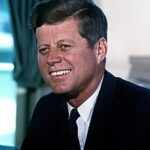President John F. Kennedy’s Nuclear Test Ban Treaty represented a watershed moment in Cold War diplomacy. Signed on August 5, 1963, this landmark agreement prohibited atmospheric nuclear testing by the United States, Soviet Union, and United Kingdom.
The Decision Behind Arms Control
Kennedy pursued the treaty after mounting scientific evidence revealed dangerous radioactive fallout. ⚠️ Atmospheric tests contaminated milk supplies with strontium-90, threatening public health globally. The president recognized that both superpowers shared concerns about nuclear contamination affecting their citizens.
Diplomatic Breakthrough Process
Negotiations intensified following the Cuban Missile Crisis of 1962. Both Kennedy and Soviet Premier Khrushchev understood the need for concrete steps toward nuclear restraint. The treaty discussions represented the first successful bilateral arms control negotiations between Cold War adversaries.
Strategic Benefits of the Nuclear Test Ban Treaty
The agreement eliminated the most environmentally destructive form of nuclear testing. 📊 Scientists estimated the treaty prevented thousands of cancer deaths from radioactive exposure. It also established crucial precedent for future arms control agreements, proving that ideological enemies could cooperate on existential threats.
Impact:
The Nuclear Test Ban Treaty generated profound consequences that extended far beyond 1963. This diplomatic achievement fundamentally altered Cold War dynamics and established lasting frameworks for international cooperation.
Immediate Health and Environmental Impact
The treaty’s most tangible benefit was dramatically reduced radioactive contamination. ⚠️ Atmospheric fallout levels dropped by 95% within two years of implementation. Public health officials documented significant decreases in contaminated food supplies. Children’s exposure to dangerous isotopes fell to negligible levels across participating nations.
Cold War Relations Transformation
Kennedy’s nuclear agreement opened unprecedented channels for US-Soviet dialogue. The treaty demonstrated that mutual survival interests could overcome ideological divisions. 🌍 International observers noted improved diplomatic communications between Washington and Moscow. This cooperation laid groundwork for détente policies throughout the 1960s and 1970s.
Long-term Arms Control Legacy
The Nuclear Test Ban Treaty established the template for future disarmament negotiations. It directly influenced the Nuclear Non-Proliferation Treaty of 1968. Strategic Arms Limitation Talks (SALT) built upon verification mechanisms pioneered in Kennedy’s agreement. Modern arms control frameworks still reference principles established in this landmark treaty, proving its enduring significance for global security.
